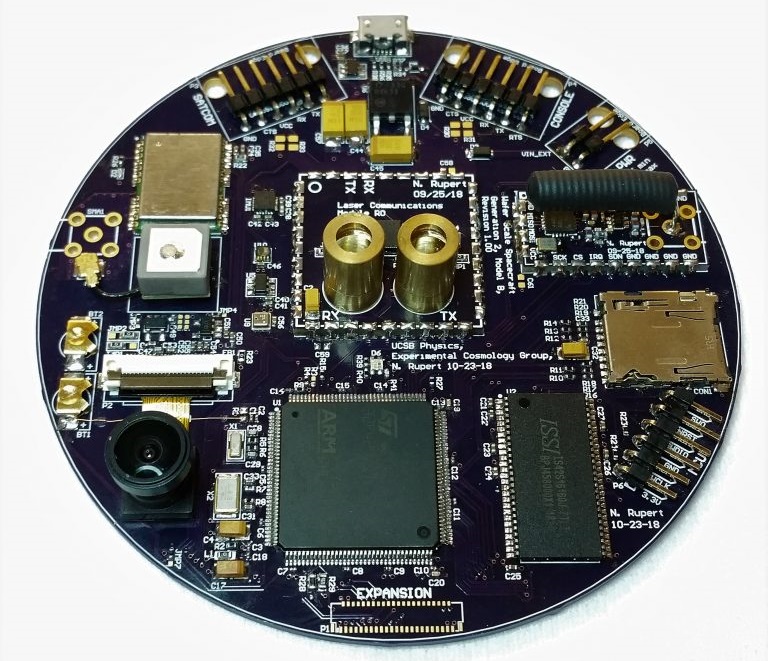As part of the study, scientists launched a balloon into the stratosphere to a height of 32 thousand meters. From it it was
As part of testing, the probe took 4 thousand photographs of the Earth and spent several hours in the stratosphere, transmitting this data.
StarChip was designed to havealmost all the basic functions of their larger analogs are the ability to photograph and transmit data to the Earth, including using laser communications, to determine their location and analyze the magnetic field.
StarChip Developer Nick Rupert
Project Breakthrough Starshot, in whichsmall satellites are being created, being developed since 2016. During this time, scientists decided that the program needed to install a powerful laser in the desert in Chile. With it, StarChip can accelerate to 20% of the speed of light - about 150 million km / h.
 Probe StarChip
Probe StarChip
In addition, StarChip should open in space.a special sail is about 400 atoms thick and 4 meters long, but researchers are worried that a laser beam that is too strong can burn it. Total scientists are engaged in the development of 50 possible problems associated with this mission.
The main goal of the project is to launchNanocabels to the constellation Alpha Centauri. Their speed will make it possible to cover a distance of three to four light years in 20 years, while the existing probes will fly to the star system nearest us for tens of thousands of years.
Perhaps the first StarChip will send pictures of AlphaCentauri already in 2060. Despite the huge number of scientists working on the project, a startup has difficulties in implementing the program. For example, the construction of a powerful laser will cost billions of dollars, and if such a beam is reflected from any surface towards the Earth, it will be able to destroy cities in seconds.
Among the initiators of the creation of Breakthrough Starshot were astrophysicist Stephen Hawking and Russian investor Yuri Milner.